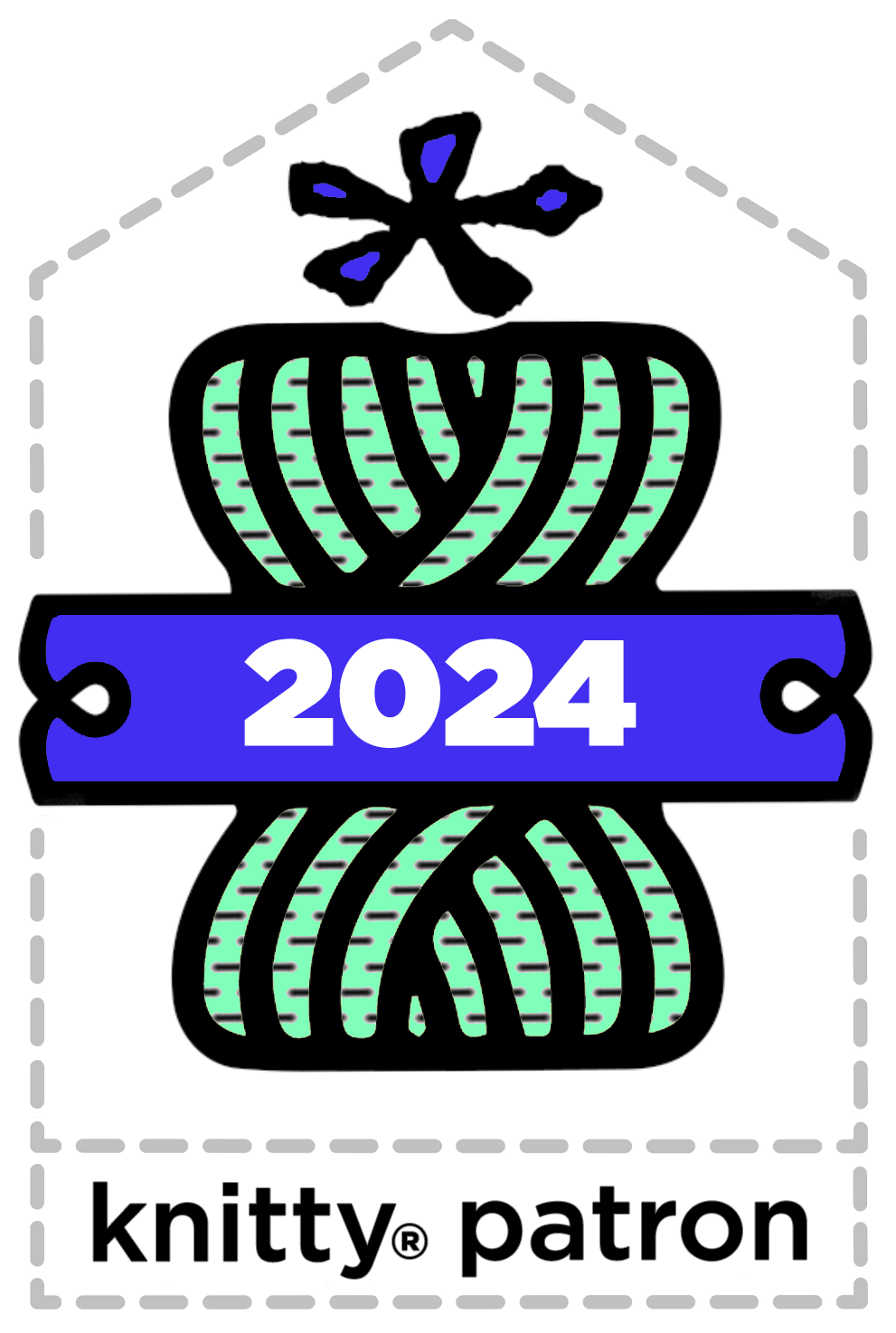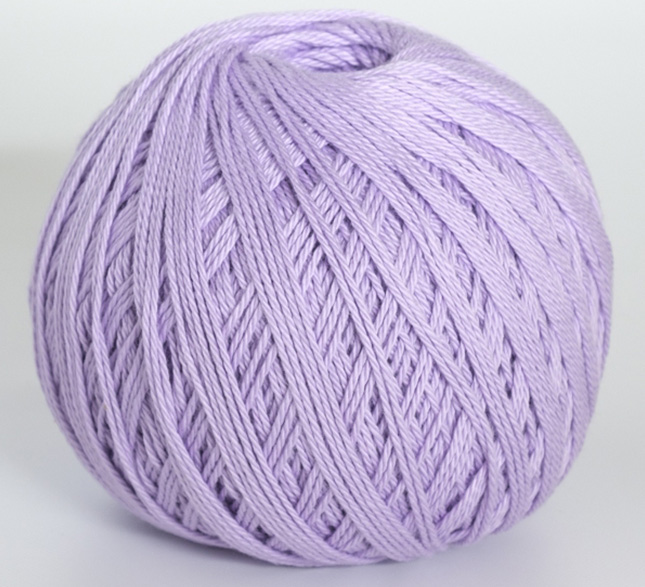Substitution Solutions, a column where a spinner uses her knowledge of fiber, yarn construction and knitting to substitute yarns by Jillian Moreno
INTRODUCTION
Substitution Solutions
How to substitute yarn in a pattern
It’s so important for a knitter to feel comfortable substituting a yarn. More and more designers are offering substitution ideas in their patterns, or at least a description of the type of yarn to look for when choosing a substitute, and you'll find helpful descriptors of Yarn Characteristics in every Knitty pattern starting with Winter 2021.
In this column, I walk you through substituting yarn for a couple of patterns in the current issue. There is absolutely nothing wrong with the great yarns that our designers have chosen for their projects. I’m just giving my opinion on other yarns to use, based on how I – as a spinner – look at a yarn and a pattern, making choices based on what I know about fiber, yarn construction, and knitting. Even if the recommended substitution yarns are discontinued one day, my hope is that the information below will make the process of choosing an alternate yarn less daunting, and help you knit projects that give you joy in the knitting and wearing.
Playing with color and fiber
Spring is a such a great time to play with color and different fibers in your knitting. The two patterns for this issue’s column are equally wonderful in cotton, a cotton blend or something a little woolly. One of my favorite fibers to add for warm and warmish weather is silk. It helps balance temperature, and makes a knitter feel just a bit fancy. We all need a little luxury in our lives, right?
Flowers in Shadow

Flowers in Shadow by Christie WN
Description of the project:
This is pretty much a perfect warm weather tee. It is easy to customize, and sub yarns for, the sky is the limit. The designer used two fingering-weight cottons, held together to play with a bit of marling for color.
What is important about this sweater? The sweater is loose and flowy, beautiful with a bit of drape. The flower motif is rendered in reverse stockinette.
What elements of yarn construction should we think about? Since this is a warm weather garment, it’s going to touch your skin. Make sure to choose something that feels good to you. The loose shape is wonderful with a bit of drape, but needs some stitch definition to make the flowers stand out.
The most fun with this sweater is choosing the colors! You can marl two fingering-weight yarns, and even change them up between the body and the flowers, or you can use semi-solid or lightly variegated single strands of DK-weight yarn.
Flowers in Shadow original yarn: Bendigo Woolen Mills Cotton
Yarn Specified in the pattern:
Name: Bendigo Woolen Mills Cotton
Fiber: 100% Cotton
Type of Spin: worsted
Ply: multi-ply (more than 2-ply)
Length/ Weight: 733 yards/670 meters | 200 grams/7 ounces
Ballband Gauge: 27 sts = 4 in/10 cm
Pattern Gauge: 22 sts/32 rounds = 4 inches/10 cm in stockinette stitch doubled
Substitution Solution:
The yarn I chose for my substitution is Malibrigo Silky Merino. It’s a buttery soft yarn with more silk than wool for drape, plus a little wool since I live where there is a lot of air conditioning. Bonus: it comes in a big variety of colors.
It’s a DK-weight yarn, so I would use just one strand. I chose two very mellow handpaints that coordinate, the lighter Archangel that is violets and natural for the body (shown left), and Sabiduria violets and plums (shown right) for the flowers. It’s a very different look from the original, but that’s one of the things I love about knitting – the choices!
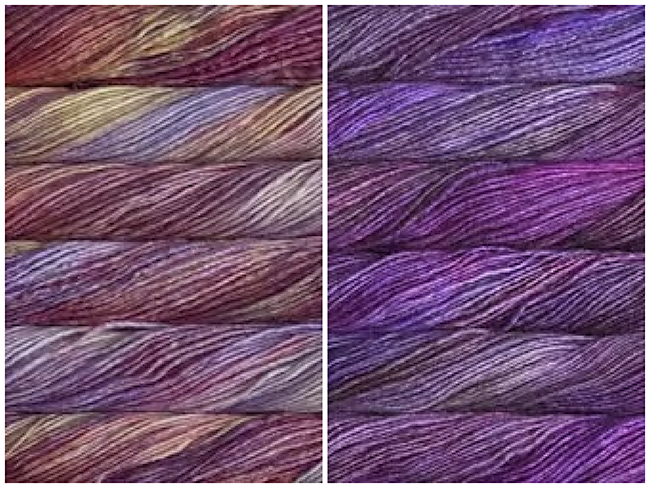
Suggested replacement yarn:
Name: Malabrigo Silky Merino DK
Fiber: 51% Silk, 49% Merino
Type of Spin: worsted
Ply: single
Length/ Weight: 150 yards/137 meters | 50 grams/1.76 ounces
Ballband Gauge: 22.0 to 24.0 sts = 4 in/10 cm
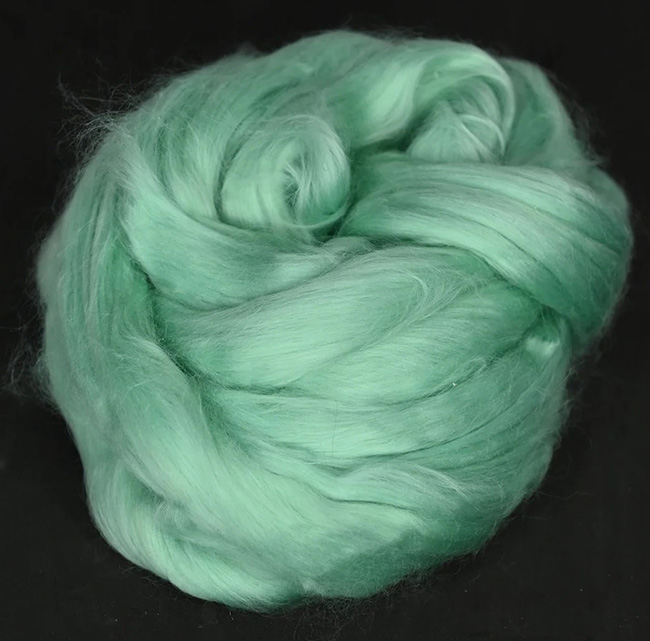
Spinning Solution:
To spin for this project, I would reach for some easy-to-spin cotton. Hipstrings carries some lovely long-stapled Egyptian cotton that is beautifully dyed in Italy. Cotton needs more twist than wool and I like to spin it fine with a worsted draft to keep it smooth. I would definitely play with using two or more colors for this project. To keep weight from being as issue I would spin two fingering weight 2-ply yarns with a light ply twist, then hold them together while knitting.
Two fingering-weight yarns held together are lighter than one DK-weight yarn, since there is a bit of air between the two yarns.
Fiber of choice:
Name: Egyptian Cotton Combed Top from Dyeing House Gallery
Fiber: 100 % Egyptian Cotton
Preparation: combed top
Spin: worsted
Ply: 2-ply fingering weight with a light ply twist
![]()
Shirtsleeves
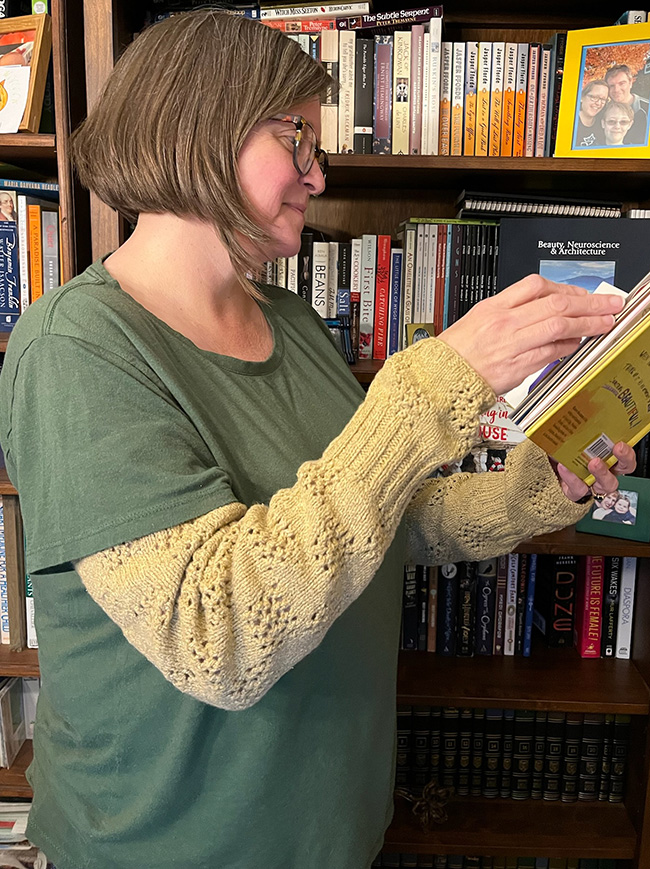
Shirtsleeves armwarmers by Karen Radcliff
Description of the project:
I love the idea of arm warmers for the spring/summer. They are easy to drop into a bag and whip out in a cold library or movie theater. These delightful cozies have a little ribbing to hold them up and just enough lace to keep them an interesting knit (and cute).
What is important about this project?
I would choose a yarn that has good elasticity, or you’ll find them puddling at your wrists. How you want the lace pattern to look is up to you. The designer went with a solid color. I might try something variegated. It’s spring and I need color!
What elements of yarn construction should we think about?
For elasticity, I always go with wool, but if you want to use a non-wool, make sure there is an element that helps the yarn spring – a little nylon or elastic. If you go for 100% cotton, or something else not-so-stretchy, you can carry along an elastic thread in the ribbing.
If you want the lace to show off the most, use a light and solid/semi-solid color, and go for a 2-ply yarn.

Shirtsleeves original yarn: Elsebeth Lavold Silky Wool
Yarn specified in the pattern:
Name: Elsebeth Lavold Silky Wool
Fiber: 45% Wool, 35% Silk, 20% Nylon
Type of Spin: worsted
Ply: 2-ply
Length/ Weight: 191 yards/175 meters | 50 grams/1.76 ounces
Ballband Gauge: 22.0 sts = 4 inches
Pattern Gauge: 25 sts/ 36 rounds = 4 inches/10 cm in lace pattern on larger needle
Substitution Solution:
Why Knot Fiber is a local to me yarn company, Kat has a fantastic sense of color. I chose a luxury wool blend for these in a 4-ply with good twist. The luxury blend has elasticity, warmth, and a bit of drape. The ply structure helps with durability and elasticity. The lace pattern won’t be as open as it would with a 2-ply yarn, but I will trade that for durability since I will be dragging these over all kinds of surfaces.
Of course, I went with a varigated colorway. I’m okay with the lace pattern being a little obscured so I could have these lush colors, plus I couldn’t pass up the color name – 3rd Assistant Librarian.
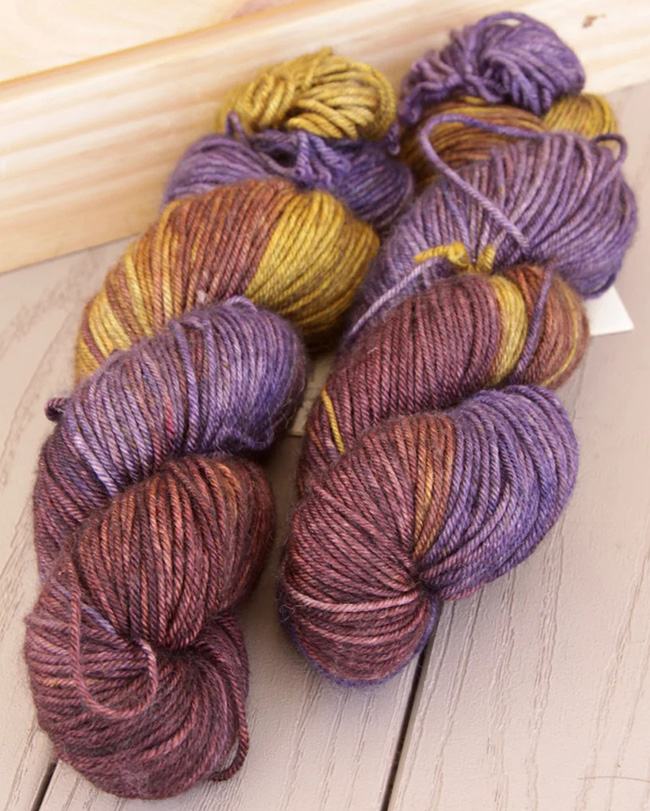
Suggested replacement yarn:
Name: Why Knot Fibers Slack
Fiber: Merino/Silk/Yak 60/20/20.
Color: 3rd assistant librarian (lol)
Type of Spin: worsted
Ply:4-ply
Length: 231 yards/211 meter | 100 grams/3.5 ounces
Ballband Gauge: 4.5 sts per inch/2.5 cm on US 7/4.5 mm needles
Spinning Solution:
Inglenook Fibers are superstars right now in the spinning fiber world. Their sense of fiber blends and colors are incredible. I won’t tell you how much of their fiber I have in my stash! They do a lot of handdyes and batts that sell out instantly when they update, but I wouldn’t sleep on their mill blends. They choose the blends and color combinations, and a mill puts them together.
This fiber is from a series based on the colors of hummingbirds. The fiber blend has softness with the Merino, and a little extra bite for durability and ease of spinning with the Corriedale. The Mulberry silk adds shine, the Sari silk flecks of tweed, and the nylon is there for sparkle.
I would spin this as a 2-ply with a woolen draft. I would sample how I would want the colors to lay out. If I spin from the end (pulling the colors vertically), the colors will all blend into a heathery yarn, if I spin from the fold (pulling the colors horizontally), the yarn will be brighter with bigger flecks of color, more tweedy than heather.

Fiber of choice:
Name: Inglenook Fibers Anna’s Hummingbird Custom Blend
Fiber: Merino/ Mulberry Silk/ Corriedale /Sari Silk/ Trilobal Nylon
Prep: combed top
Draft: Woolen, maybe from the fold
Ply: 2-ply
![]()
ABOUT THE AUTHOR
 Jillian Moreno is Knitty's Catalyst and Spinning editor. She's the Developmental Editor for PLY Magazine and PLY Books. A couple years ago, she wrote the best-selling spinning bookYarnitecture: A Knitter’s Guide to Spinning: Building Exactly the Yarn You Want. Now she’s writing another spinning book and trying hard not to start weaving.
Jillian Moreno is Knitty's Catalyst and Spinning editor. She's the Developmental Editor for PLY Magazine and PLY Books. A couple years ago, she wrote the best-selling spinning bookYarnitecture: A Knitter’s Guide to Spinning: Building Exactly the Yarn You Want. Now she’s writing another spinning book and trying hard not to start weaving.
She lives in a house packed with fiber and books and has a hand-spinning Patreon over here.
Flowers in Shadow image © Christie WN; Shirtsleeves image © Karen Radcliff; all other images courtesy the yarn and fiber dyers listed with the image. Contact Jillian







